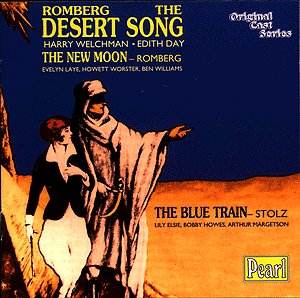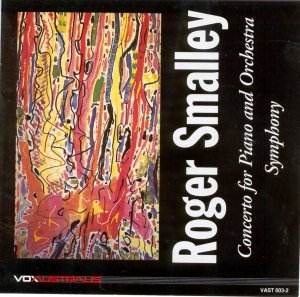 Composer: Sigmund Romberg, Robert Stolz
Composer: Sigmund Romberg, Robert Stolz
Works: The Desert Song, The New Moon, The Blue Train
Performers: Sidney Pointer, Harry Welchman, Edith Day, Dennis Hoey, Lily Elsie, Bobby Howes, Arthur Margetson, Ben Williams, Howett Worster
Recording: 1926 and 1929 performances, remastered
Label: Pearl GEMM CD 9100
The operettas of Sigmund Romberg and Robert Stolz encapsulate a unique intersection of European romanticism and American musical theatre’s burgeoning sophistication in the early 20th century. Romberg, born in Hungary, became a titan of the Broadway stage, blending lush melodies with compelling narratives, as evidenced in works like The Desert Song and The New Moon. Conversely, Stolz, an Austrian composer, brought a lighter, more whimsical touch to his scores, such as The Blue Train. This compilation presents a fascinating snapshot of the theatrical landscape of the 1920s, capturing the essence of operetta through the prism of early recording technology.
The performance of The Desert Song stands out for its exuberant orchestration and the deft handling of its varied emotional landscapes. The ensemble, particularly the brass and woodwinds, captures the exoticism that characterizes the piece, echoing the North African setting with vibrant colors. However, the recording does exhibit some wear, notably in the high-frequency distortions during climactic moments, which detracts slightly from the overall impact. Noteworthy is Sidney Pointer’s warm yet commanding presence in “One Alone,” where his lyrical phrasing and tonal clarity illustrate Romberg’s melodic genius. The ensemble’s balance is occasionally flawed, as in “Riding Song of the Riffs,” where the wind section’s tuning issues briefly overshadow the vocal lines, showcasing the limitations of the period’s recording technology.
Transitioning to The New Moon, the performers shine through the intricacies of the score, with Evelyn Laye’s breezy interpretation of “Softly, As in a Morning Sunrise” particularly notable for its elegant phrasing and stage presence. The clarity of her delivery, juxtaposed with Ben Williams’ robust vocalism, creates an engaging dynamic that serves the narrative’s romantic tension. The historical context of this work, set against the backdrop of the French Revolution, adds depth to the characters’ plight, a testament to the libretto’s clever construction by Hammerstein II and his collaborators. The presence of an electric xylophone in the orchestration adds a novel, if somewhat intrusive, color that reflects the era’s experimentation with sound.
The Blue Train, while less celebrated, exemplifies Stolz’s ability to weave charm into simplicity. The performance captures the light-heartedness of the narrative, despite the trivial storyline revolving around a broken engagement. Lily Elsie’s contributions, though showing signs of her advancing years, retain a magnetic charm, particularly in “You’ve Got to Fit Your Step,” where her interpretation hints at the jazz influences permeating London’s West End at the time. The recording quality here is more forgiving, allowing the orchestra to emerge more prominently in the mix, although still lacking the vibrancy of modern recordings.
Technical aspects of the performances reveal both strengths and weaknesses inherent in the era’s recordings. There are moments of exceptional clarity, particularly in the higher registers, where the performers excel. Yet, the limitations of the acoustic technology lead to a certain flatness in dynamic contrast and spatial depth, often leaving orchestral textures feeling somewhat recessed against the vocal lines. The engineering decisions made during the remastering process do provide a more coherent listening experience than earlier iterations, yet they cannot fully compensate for the original recordings’ inherent flaws.
The historical significance of these works, coupled with the engaging interpretations, positions this collection as an important reflection of an evolving musical theatre landscape. While not the definitive recordings of these operettas, they serve as a valuable reminder of the rich tapestry of early 20th-century musical expression, inviting listeners to appreciate the artistry of both Romberg and Stolz. The selection, though uneven in execution, ultimately celebrates the vibrant spirit of the operetta as it transitioned from European stages to the American spotlight. An updated recording project featuring modern interpretations could indeed breathe new life into these timeless scores, ensuring their place in the contemporary musical dialogue.



